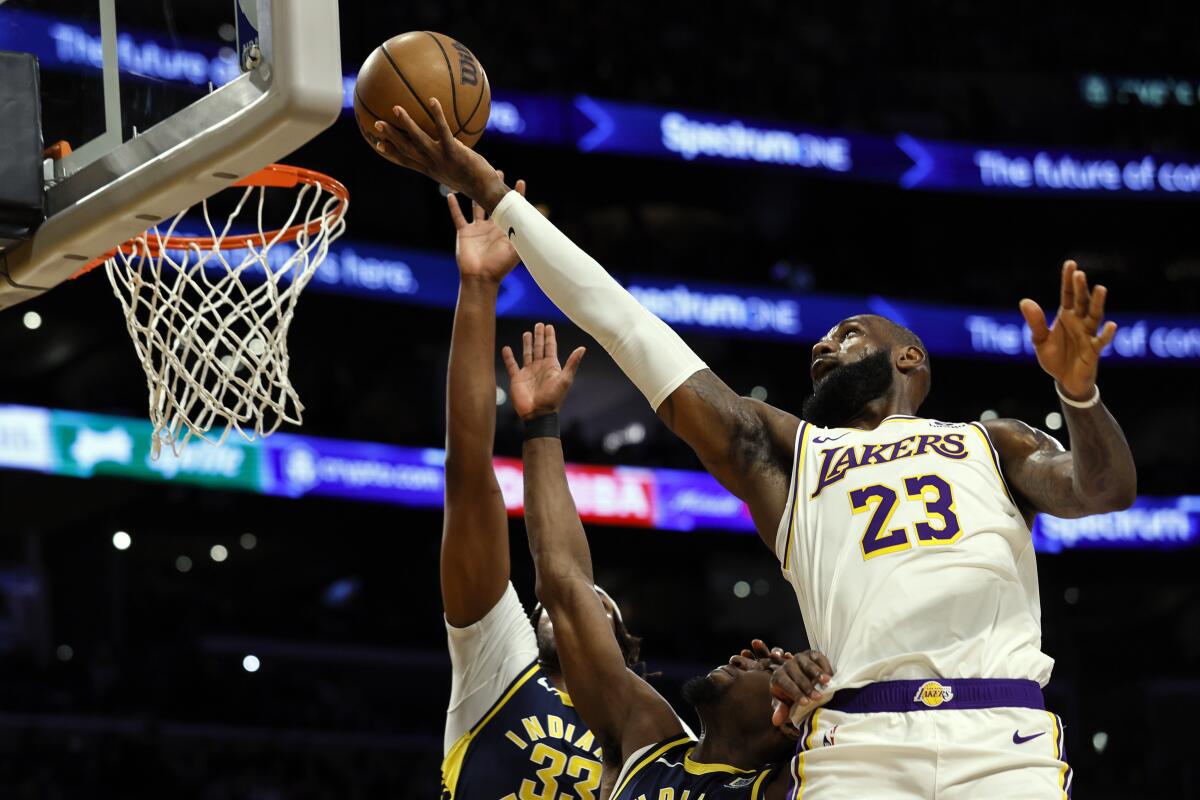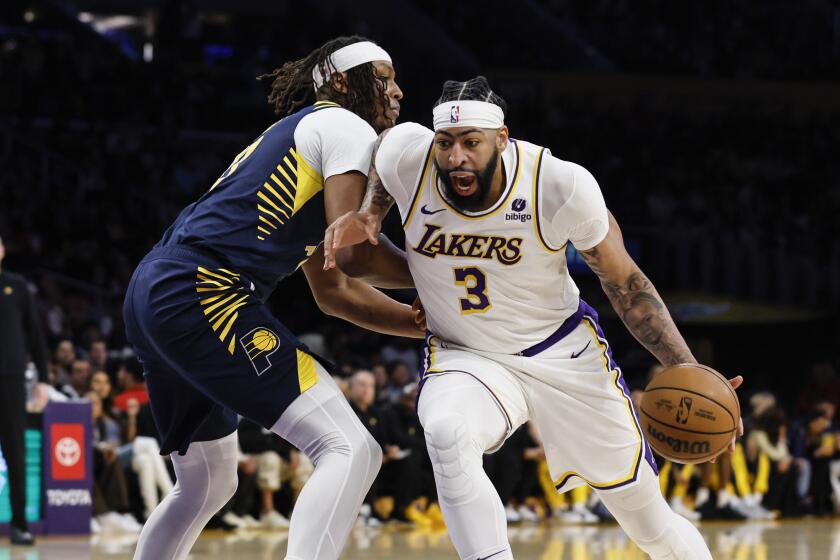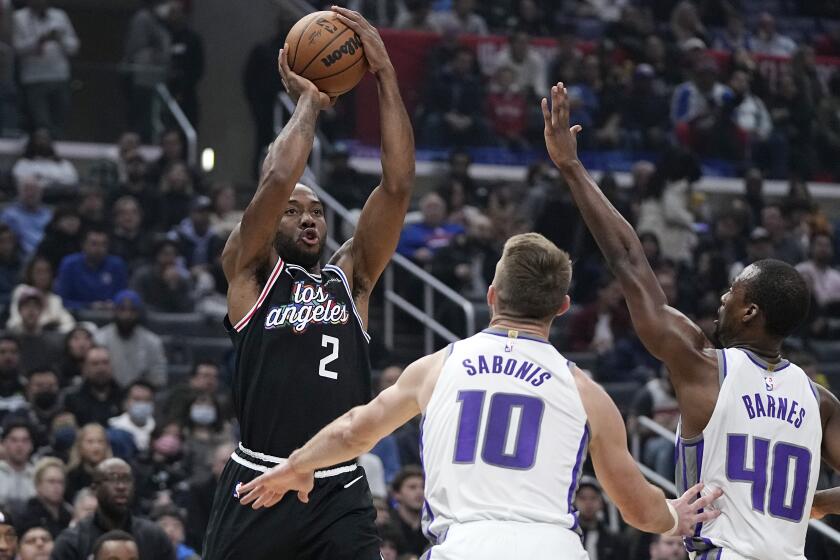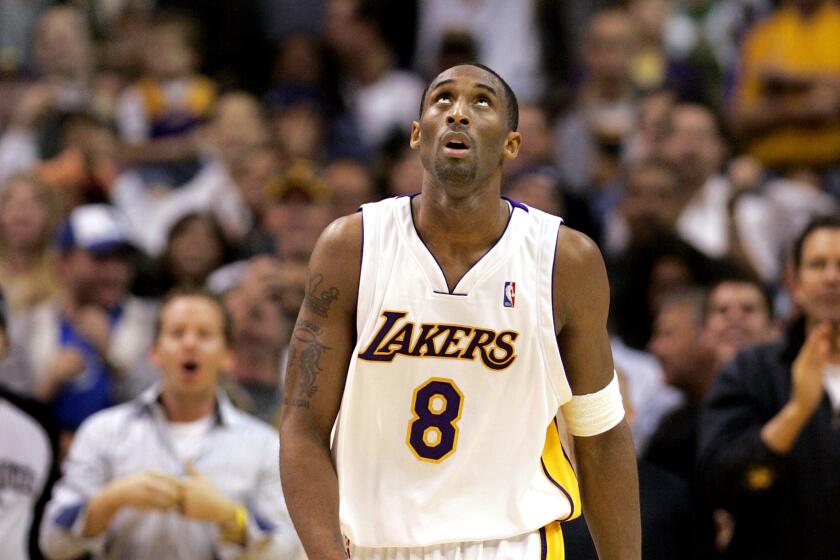Where does Lakers’ 150-point outburst against Pacers rank on all-time franchise list?

- Share via
The number isn’t attained often. A team scoring 150 points in an NBA game is an eye-opener and an outlier, prompting a visit to the record book. As kids these days say about anything remotely stressful: “It’s a lot.”
The Lakers defeated the Indiana Pacers, 150-145, Sunday at Crypto.com Arena. Notably, all that scoring came in a regulation 48 minutes. No overtime. That separates the feat from many other NBA games where a team has hit the 150-point mark.
The Lakers’ point total was the most by the franchise since a 155-118 blowout win over the Phoenix Suns on Jan. 2, 1987.
Let’s start at the top. The highest scoring game in NBA history, according to statmuse.com, occurred in the thin air of Denver’s McNichols Sports Arena on Dec. 13, 1983, with the Detroit Pistons defeating the Denver Nuggets, 186-184, in triple overtime.
Anthony Davis scored 36 points and Spencer Dinwiddie finished with 26 points in the Lakers’ 150-145 victory over the Indiana Pacers.
Now, that’s a lot. But the score at the end of regulation was only 145-145, and the Lakers and Pacers scored more points per minute (6.15) than the Pistons and Nuggets (5.87) did in the game’s entirety. An NBA-record four players scored more than 40 points — Kiki Vandeweghe (51), Alex English (47), Isiah Thomas (47) and John Long (41) — and six players from each team scored in double figures.
Notably, the three-point shot had been implemented four years earlier, but only four three-pointers were attempted, with each team making one of two.
“It was a shot you took to try to come back when you were down,” Kelly Tripucka of the Pistons told ESPN years later. “It wasn’t a part of anybody’s offense. Our feeling was, why not move the ball and move your feet and get a good shot from 15 feet? We were playing old-school basketball, I guess.”
The second-most points in an NBA game came last season when the Clippers defeated the Sacramento Kings, 176-175, in double overtime. It marked Russell Westbrook’s Clippers debut and he contributed 17 points and 14 assists. The teams averaged 6.05 points a minute, fewer than the Lakers and Pacers on Sunday.
Kawhi Leonard finishes with 44 points and Russell Westbrook makes a solid debut for Clippers, but late mistakes send them to a 176-175 loss to the Kings.
The highest point total in a game that lasted only the regulation 48 minutes came in 1990 when the Phoenix Suns beat the visiting Nuggets, 173-143. The Suns led, 107-67, at halftime, and when the game ended, 6.58 points had been scored per minute.
How frequently does a team score 150 points? There are 1,230 games in an NBA season. Last season, 10 teams reached 150 or more points, while this season it’s been achieved nine times.
The Lakers’ highest output was produced by one of their greatest teams, the 1971-72 NBA champions that featured Hall of Famers Jerry West, Wilt Chamberlain and Gail Goodrich in a 162-99 win over the Golden State Warriors.
The first of 15 times the Lakers have exceeded 150 points came Dec. 8, 1961, in their second season in Los Angeles after moving from Minneapolis. They defeated the Philadelphia Warriors, 151-147, in triple overtime with Chamberlain accumulating 78 points and 43 rebounds — for the losing Warriors.
Time flies when you score 81 points.
Less than four months later, Chamberlain set the single-game scoring record with 100 points for Philadelphia in a 169–147 win over the New York Knicks on March 2, 1962, at Hershey Sports Arena in Hershey, Pa. Again, a lot.
The second-highest individual scoring total is 81, by Kobe Bryant on Jan. 22, 2006. But the final score wasn’t anywhere close to the 150 mark: The Lakers defeated the Toronto Raptors, 122-104.
More to Read
All things Lakers, all the time.
Get all the Lakers news you need in Dan Woike's weekly newsletter.
You may occasionally receive promotional content from the Los Angeles Times.












